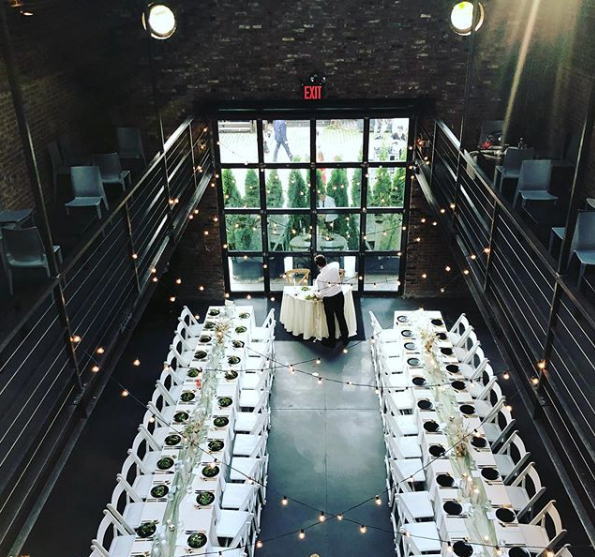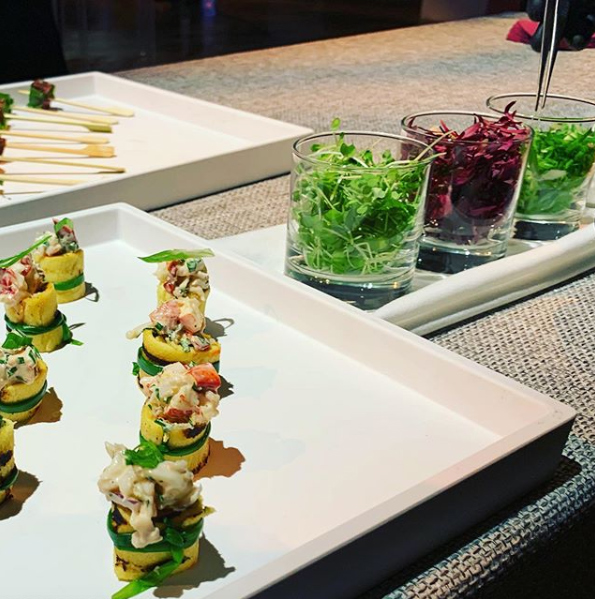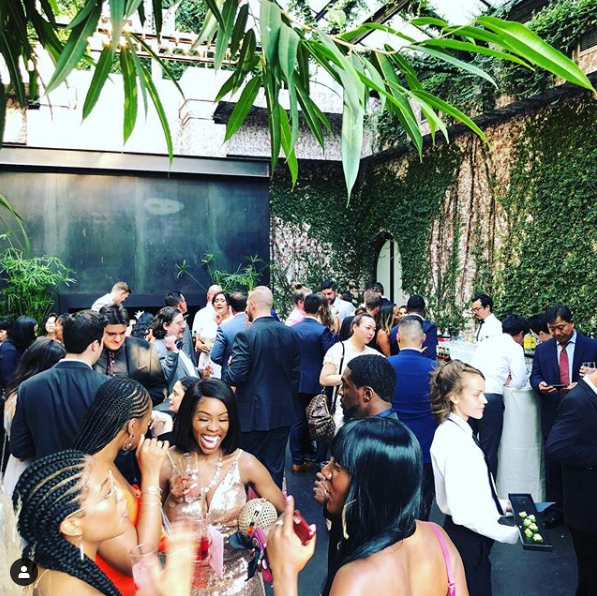The Life of a Party, Part 1: The Planning Stage & Setting Parameters
Over the last 15 or so years, we’ve had the pleasure of helping thousands of New Yorkers figure out the ins and outs of throwing a catered party. While it may not rank up there with getting married, buying an automobile or putting a downpayment on a home, hosting a catered event in NYC is still a big deal.

For one thing, there are a number of working parts—food, beverages, service, party supply rentals—and the costs can add up quickly.
And for another, throwing a catered event—whether it’s a wedding, a celebration of life, a year-end holiday party, mitzvah or any of the other events we serve—can make you feel as though you and your decision-making skills are up for public review.
While it’s normal to feel a little stress around the process, we want to assure you: Throwing a catered party is easier than it looks. As we’ve done previously with the “How Do I Arrange Liquor Service?” blog—still one of the most-visited resources on our site—we’ve created this multi-part blog to serve as a resource to help guide you through the process. Let’s begin!
1. The Planning Stage: Setting Parameters
When it comes to planning catered parties, there’s what we like to describe as an eternal struggle between “the dream” and “the budget.” We can help bring them together.
a) The Guest List: How Big is “Big Enough”?
This is the logical place to begin, as it has a great deal to do with—let’s face it—everyone’s number-one question: What will it cost?
Think about how many guests you want to serve. Here at Red Table, we define a “small gathering” as one serving roughly 75 to 150 guests, a “medium gathering” as one having anywhere from 150 to a couple hundred guests, and a “large gathering” as one serving 1,000 guests or more.
Once you’ve settled on a number of guests, you have other decisions to make. Will you serve a full plated dinner or a “heavy cocktail” menu of passed appetizers and stationary platters (such as our popular “market tables”)?

If you’re planning on a full dinner with alcohol service in New York City, you can plan on a rough estimate of $275 per guest. If you’re going the “heavy cocktail” route, the cost drops to closer to $175 per guest whereas a 2hr passed cocktail event with bar, rentals, service and all the trimmings can come down closer to $85 per guest. But take careful note: These rough figures don’t include NYS sales taxes, which add roughly 9% to your cost.
b) Party Till You Drop: 2 Hours, 4 Hours or 6 Hours?
Think about your special event in terms of time: Will it be a 2-hour, a 4-hour, or a 6-hour event? And here’s something to know: Any event—even a 2-hour one—requires setup and breakdown time totalling 3 hours in addition to the actual party time. So a “2-hour event” is actually a “5-hour event” when it comes to billing. With some variations, this is more or less an industry standard.
A 2-hour event is probably a store event pop-up—we do a lot of these—or an after-work cocktail party or corporate “thank you” event. It may be an appealing option because of the reduced overall cost to you, but there are drawbacks as well. If you try to compress important aspects of partying—including the all-important greeting and thanking of your guests!—there won’t be a great deal of time for the “party” part of the equation.
For most events, a 4-hour window is a great option. You should have ample time to stretch out and enjoy the event while keeping the pace of service lively and entertaining. In this timeframe, even a wedding will tend to feel unhurried but still exciting.

Then there’s the 6-hour window. This is a great option for a truly celebratory and memorable event, but there are extra considerations. Each hour adds expense: You may need to rent an extra set of glasses and bar supplies, for instance. Will this exceed your venue’s standard event window? Are your guests the kind of people who are actually ready to party / dance / sing karaoke? You’ll probably want to serve a light snack at the end of the event; our “Slider Station” is perfect for this. All food for thought.
c) The Whens and Wheres of Party Planning in New York
You’ll get yourself pretty far down the right path by selecting the right venue for your event from the start, both in terms of location and aesthetics. If the space is inexpensive, for example, but you’ll have to work (and spend) overtime finding rental swag or decorative touches to make the place look as compelling and attractive as your vision, it may not actually be cost-effective.
Next question: When is the event going to be held? When it comes to NYC special events, April through June, and then September – December are peak months, not only for weddings but many other types of special events. Expect to pay more—sometimes a good deal more—to rent venues during these months.
Similarly, the day of the week matters: Weekends simply cost more. If you’re looking to trim your costs, can you swing a Thursday-night or Sunday event?
Speaking of which: You can totally, 100% host the event at your own home, at a friend’s place, or at an informal event space you have access to. But there are pros and cons.
You’ll still need to staff appropriately—we strongly recommend against trying to blend informal “helpers” with paid servers—for one. Then there’s the issue of damage and liability, something all venues are legally prepared for and deal with all the time. There will be a lot of foot traffic in a small space over a short period of time. If you have furniture, artwork or heirlooms you care about, we strongly suggest making sure they’re insured for the duration of the event with an event-specific policy or putting them somewhere safe for the event.
Will you need extra help? Quite possibly. Caterers will often move light items for you, but when you need to get the sofa up the stairs (or the Ming vase off the display stand) any wise caterer will decline; that is what movers and art handlers are for (and yes, we’re happy to connect you with some!).
d) Giving Your Catered Event a Bigger Bang: Decorative Flair or Rental Madness?
As we’ve pointed out in a previous party-planning blog, you have choices when it comes to renting vs. buying vs. making your own decorations.
What’s your goal? If it’s making a certain kind of splash, we’re all for your renting the $2.50 forks as opposed to the $.50 ones, or the $20 chairs vs the $7 ones.
But if you’re trying to place more of your overall budget on the food and beverages than the rented equipment, it may make more sense to settle on the less expensive option and enhance the event with truly dynamite lighting and atmospherics.
This could take the form of colored tapestries, special linens, or dramatic candelabras and centerpieces. Many venues offer different lighting packages: Make the most of them by considering what the overall effect of the event will be, not a single item or set of items.
e) In Conclusion: Embrace the Budget
This is a great place to wrap up for today: By reminding you to look at the overall picture and remember your goals. If budget is no impediment, by all means go as big and bold and flashy as your heart desires. If your budget isn’t as vast as you might want, by all means embrace that too. Let us know what you realistically have to work with, and we’ll do everything we can to help you make the most of it: Letting you know where it might make sense to economise, and where it really, truly makes sense to not cut corners.
At the end of the day, your special event—no matter what its purpose—is a celebration: Either of you, or someone you love; of a cause you believe deeply in; or any of the other kinds of events and mileposts that bring us together as human beings. Trust us: THAT’S what you’ll remember six months, a year, or five years down the road.